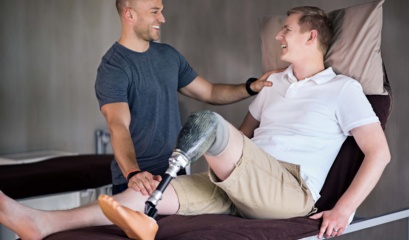The severity of an ankle sprain is based on the level of pain, swelling, bruising, and the ability to bear weight on the ankle.
Our Double Bay Diamonds team have all been there and rolled an ankle at training or mid-game. They’re by far one of the most common injuries experienced by netball players, varying in severity and frequency.
Research indicates that up to four out of five netball players will experience at least one ankle sprain in their lifetime. Alarmingly, many of these injuries occur early in an athlete’s career, with an 84% increase in ankle sprains reported among 10–14 year olds over the past decade.
Recurrent sprains are prevalent, with up to half of all netball players experiencing them, leading to ongoing instability, pain, and risk of re-injury.
How does an ankle sprain occur?
Ankle sprains often occur when the ankle rolls inwards. The further the ankle rolls the more ligaments are sprained (torn). The bones in our bodies are attached by ligaments. There are three main ligaments on the outside of the ankle that are vulnerable in a typical ankle sprain.
If there is pain anywhere else – higher in the shin, in the foot, the front or inside of the ankle – it is important to seek further physiotherapy or medical advice in case it is more than a sprain.
The extent of a typical ankle sprain will be noticed through the amount of pain, swelling, bruising and the ability to put weight on the ankle.
What to do when you sprain your ankle?
- Protection: Rest the injured area initially, but gentle movement is beneficial and advised
- Optimum Loading: While rest is important, maintaining some movement and walking on the ankle, if manageable, will help you recover faster
- Ice: Apply ice for 10 minutes every hour, for a few days to reduce swelling and pain
- Compression: Use compression bandages as advised by your physiotherapist
- Elevation: Elevate your injured ankle on pillows while lying down to reduce swelling
Early movement, alongside medical treatment and anti-inflammatories, has shown to be most effective for acute injuries.
Physiotherapy and injury prevention
Seeking physiotherapy treatment is vital for a swift return to the netball courts. Full ankle movement must be restored before returning to play. Long-term exercises focusing on strength and stability – such as balancing on one foot, are essential for preventing recurrence.
Evidence suggests that injury prevention programs, like NetballSmart and KNEE programs, are highly effective in reducing injuries generally. These programs include warm-up and strengthening exercises tailored to mimic netball-specific movements.
Ankle supports: braces and taping
While less than half of netball athletes use external ankle support during play, studies show that taping and bracing can significantly reduce the rate of ankle sprains. These supports don’t stop sprains but restrict the extent of ankle rolling to minimise damage. However, proper application is crucial for effectiveness as only a well-fitted brace or correctly applied tape provides the necessary support.
When applied or fitted correctly, normal ankle movement still occurs, and muscle activity continues. Taping and bracing therefore will not weaken ankle muscles but help with support.
There is no need to tape or brace if the ankle has not been sprained before. The only time we’d suggest support with no prior injury is a few weeks before or during a netball tournament.
Double Bay Diamonds netball players: One of our physios stop by the courts every weekend if you have any concerning little niggles or sore spots bothering you.
Stay safe and keep playing!









